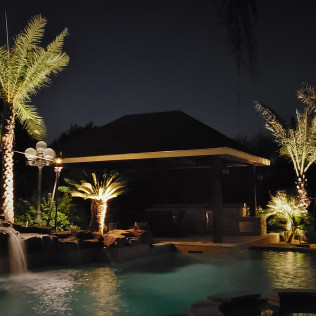what are led lights

LED stands for "Light Emitting Diode." LED lights are a kind of lighting expertise that uses semiconductor gadgets to produce light. Unlike traditional incandescent bulbs, which rely on heating a filament to produce mild, LEDs function by passing an electrical present by way of a semiconductor material, inflicting it to emit light. Here are some key traits and options of LED lights:

Energy Efficiency: LEDs are extremely energy-efficient, changing a important portion of electrical energy into mild. They devour much less electrical energy than traditional incandescent and fluorescent lights, leading to lower energy payments.
Longevity: LED lights have an exceptionally lengthy lifespan. They can last up to 25,000 to 50,000 hours or extra, depending on the quality and utilization. This longevity reduces the need for frequent replacements.
Instant Lighting: LEDs present prompt illumination when turned on, with no warm-up time required. They attain full brightness immediately, making them appropriate for functions the place quick lighting is needed.
Cool Operation: LEDs emit very little heat compared to incandescent and halogen bulbs. This makes them safer to the touch and reduces the danger of burns or fire hazards.
Durability: LEDs are solid-state lighting devices, which means they're extremely proof against shock, vibrations, and exterior impacts. They are less fragile than conventional bulbs.
Directional Lighting: LEDs emit mild in a specific course, making them extremely environment friendly for centered lighting purposes. This characteristic reduces mild wastage and allows for exact illumination.
Color Temperature Options: LEDs can be found in numerous color temperatures, from heat white (providing a cozy, yellowish light) to cool white (offering a brilliant, bluish-white light). This versatility allows users to choose out lighting that fits their preferences and needs.
Dimmability: Many LED fixtures and bulbs are dimmable, allowing customers to regulate the brightness to create the desired ambiance and save additional energy when full brightness just isn't needed.
Hop over to this website Rendering Index (CRI): LEDs can obtain excessive CRI values, which implies they accurately render colours compared to natural daylight. This is essential for purposes where colour accuracy is essential, corresponding to in artwork galleries and retail settings.
landscape lighting nashville : LEDs emit minimal ultraviolet (UV) and infrared (IR) radiation, reducing the risk of injury to delicate materials and artwork.
Environmental Benefits: LED lighting contributes to power conservation and lowered greenhouse fuel emissions due to its low vitality consumption and long lifespan. It also contains no hazardous supplies like mercury, which is found in some other types of lighting.
Instantaneous Control: LEDs can be turned on and off regularly with out affecting their lifespan or efficiency. This makes them perfect for functions the place rapid switching is required.
Smart Lighting Integration: Many LED lighting techniques could be integrated into good house or constructing automation methods. This allows for distant management, scheduling, and customization of lighting to fulfill particular wants and preferences.
LED lights are widely used in a broad range of purposes, together with residential lighting, business lighting, automotive lighting, street lighting, shows, and more. Their vitality effectivity, durability, and flexibility have made them a popular selection for each common and specialized lighting needs..
